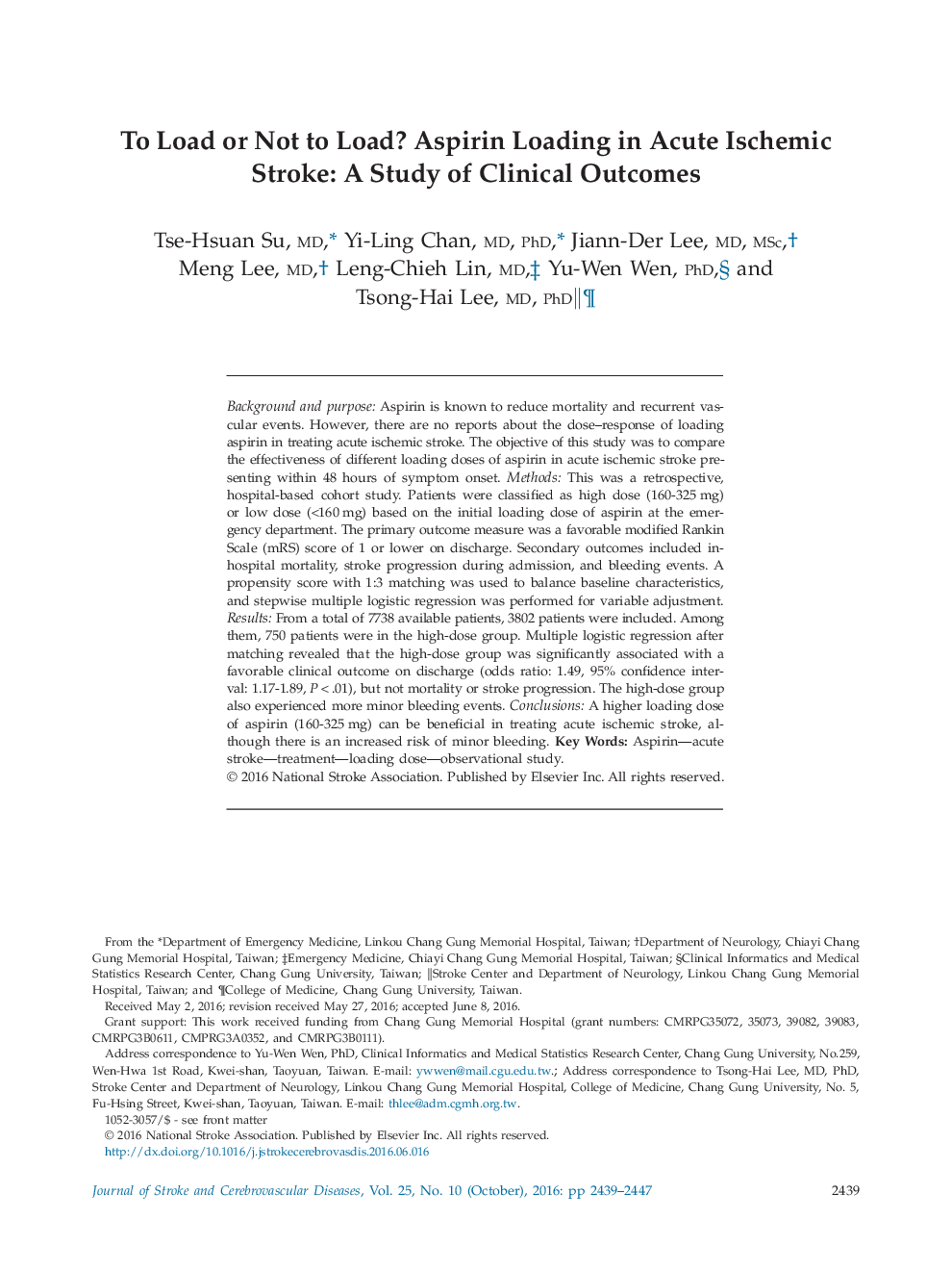| Article ID | Journal | Published Year | Pages | File Type |
|---|---|---|---|---|
| 2702116 | Journal of Stroke and Cerebrovascular Diseases | 2016 | 9 Pages |
Background and purposeAspirin is known to reduce mortality and recurrent vascular events. However, there are no reports about the dose–response of loading aspirin in treating acute ischemic stroke. The objective of this study was to compare the effectiveness of different loading doses of aspirin in acute ischemic stroke presenting within 48 hours of symptom onset.MethodsThis was a retrospective, hospital-based cohort study. Patients were classified as high dose (160-325 mg) or low dose (<160 mg) based on the initial loading dose of aspirin at the emergency department. The primary outcome measure was a favorable modified Rankin Scale (mRS) score of 1 or lower on discharge. Secondary outcomes included in-hospital mortality, stroke progression during admission, and bleeding events. A propensity score with 1:3 matching was used to balance baseline characteristics, and stepwise multiple logistic regression was performed for variable adjustment.ResultsFrom a total of 7738 available patients, 3802 patients were included. Among them, 750 patients were in the high-dose group. Multiple logistic regression after matching revealed that the high-dose group was significantly associated with a favorable clinical outcome on discharge (odds ratio: 1.49, 95% confidence interval: 1.17-1.89, P < .01), but not mortality or stroke progression. The high-dose group also experienced more minor bleeding events.ConclusionsA higher loading dose of aspirin (160-325 mg) can be beneficial in treating acute ischemic stroke, although there is an increased risk of minor bleeding.
